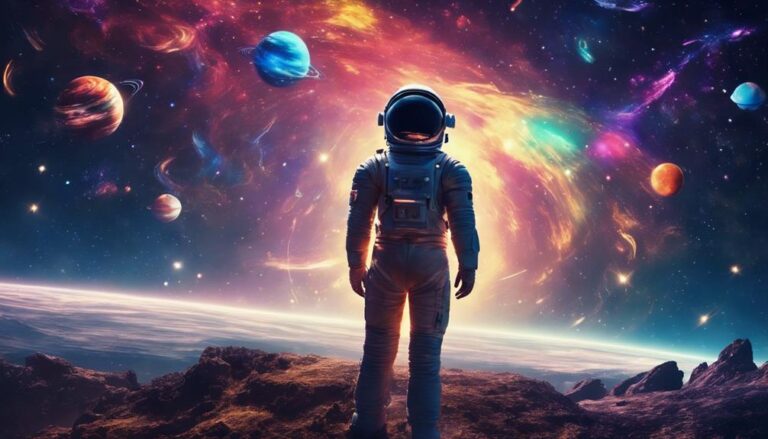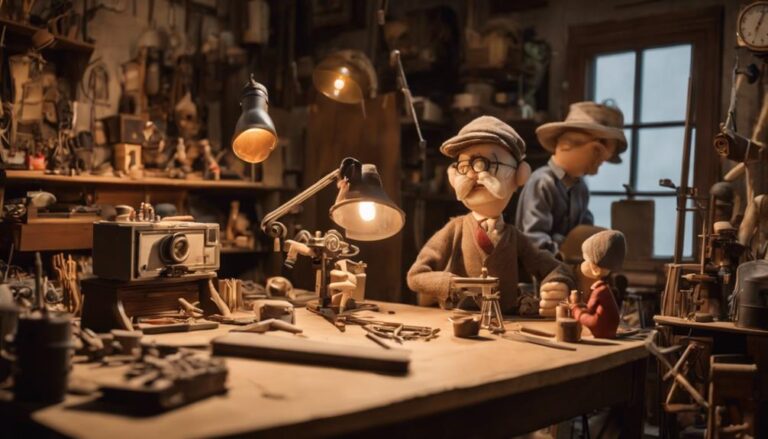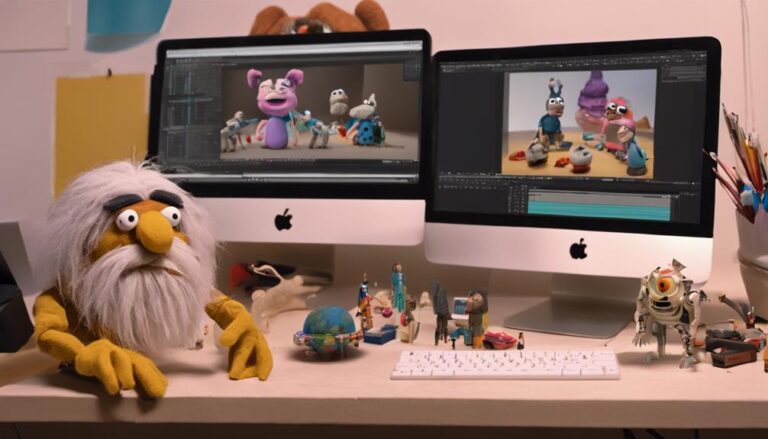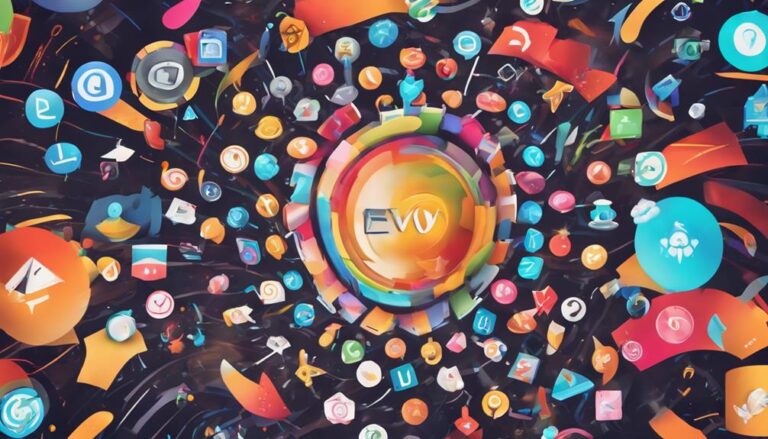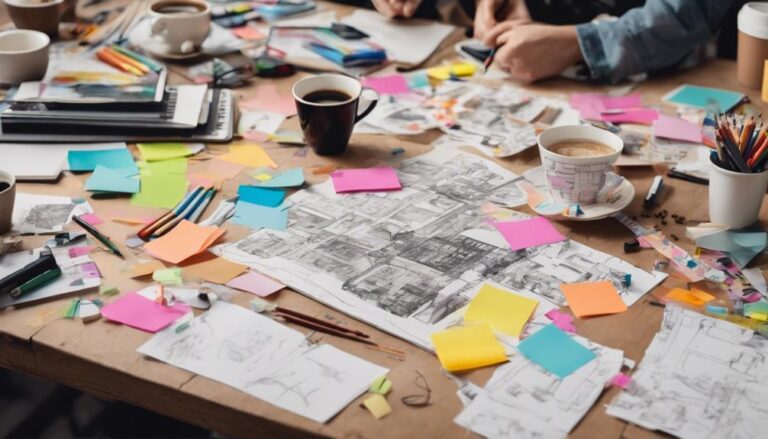2D Animation Video Production Step by Step
You're about to bring your 2D animation video to life, and it all starts with concept development. Brainstorm ideas that spark creativity, visualize your concept through mood boards and rough character designs, and craft a script that drives the narrative forward. Then, develop characters with unique personalities, design props and environments, and prepare assets for production. As you move into animation production, refine your storyboard, test animation cycles, and finalize visual elements. But that's just the beginning – you'll also need to add sound effects, music, and audio design, edit and revise your work, and finalize your output for delivery. Now, let's take it one step further…
Key Takeaways
- Develop a concept that resonates with the target audience through brainstorming, theme exploration, and character design.
- Craft a script that drives the narrative forward, focusing on storytelling techniques like character development, pacing, and conflict resolution.
- Design and prepare props, costumes, environments, and special effects to bring the story to life, maintaining consistency in design and color palette.
- Refine the storyboard, testing animation cycles and finalizing visual elements to ensure a seamless and engaging video.
- Edit and revise the video, refining edit decisions, scene composition, and pacing to create a cohesive and polished final product.
Developing Your Concept
As you plunge into the world of 2D animation video production, start by brainstorming ideas that spark your creativity and distill them into a concept that resonates with your target audience.
This concept development phase is vital in shaping your video's narrative, visual style, and overall tone. Take your time to freely associate ideas, exploring different themes, characters, and settings that align with your project's goals. Idea brainstorming can be a fun, iterative process, so don't be afraid to experiment and try out new things.
Visualize your concept by creating mood boards, collecting reference images, or even sketching out rough character designs. This will help you solidify your vision and confirm everyone involved in the project is on the same page.
Scriptwriting and Storyboarding
With your concept solidified, you're ready to bring your story to life by crafting a script that drives the narrative forward and a storyboard that visually interprets each scene.
This is where script fundamentals come into play, guaranteeing your script is well-structured, engaging, and effectively conveys your message. You'll need to focus on storytelling techniques such as character development, pacing, and conflict resolution to keep your audience invested.
As you write your script, keep in mind the following key elements:
- Character arcs: How do your characters change or grow throughout the story?
- Scene shifts: How do you smoothly move from one scene to the next?
- Dialogue consistency: How do your characters' voices and tone stay consistent throughout the script?
Once you have a solid script, you can start creating your storyboard. This visual representation of your script will help you plan out camera angles, shot composition, and pacing. It's crucial to verify your storyboard accurately reflects your script, as it will serve as a guide for the rest of your production.
Character Design and Creation
Character Design and Creation
Imagination ignites as you breathe life into your characters, crafting unique personalities, appearances, and traits that will captivate your audience and drive your story forward. You'll want to create characters that are relatable, memorable, and authentic. To do this, consider their character traits, such as their values, motivations, and goals. What are their strengths and weaknesses? How do they interact with others?
| Character Aspect | Description | Example |
|---|---|---|
| Physical Appearance | Body type, facial features, hair, clothes | Tall, slender, bright blue eyes, curly brown hair |
| Personality | Traits, attitudes, and behaviors | Confident, optimistic, loyal, and a bit sarcastic |
| Facial Expressions | Emotional range, from happy to sad | Bright smile, raised eyebrows, tearful eyes |
| Backstory | History, experiences, and relationships | Orphaned at a young age, grew up with a foster family |
Asset Development and Preparation
You'll transform your characters into visual assets by designing and preparing the necessary elements, from props and costumes to environments and special effects, to bring your story to life. This stage is vital in setting the tone and atmosphere of your animation.
In asset development, you'll focus on creating individual components that will be used throughout the production. This includes designing and preparing props, costumes, and environments that align with your story's vision. You'll also develop special effects, such as fire, water, or magic, to add an extra layer of realism and engagement.
Organize your assets in a logical and structured manner, using clear and descriptive file names and folders, to facilitate easy access and file management.
Create a style guide to maintain consistency in design and color palette throughout the production.
Establish a naming convention for your assets, such as using a specific prefix or suffix, to facilitate asset organization and tracking.
Animation Production and Testing
As you move into the animation production and testing phase, you'll refine your storyboard to certify every scene flows seamlessly into the next.
You'll test animation cycles to guarantee your characters' movements are natural and engaging.
Now, it's time to finalize your visual elements, bringing your world and its inhabitants to vivid life.
Storyboard Refining Process
During this pivotal stage of animation production, refining your storyboard involves meticulously reviewing and revising each scene to guarantee every detail aligns with your vision. You're ensuring that every element, from character expressions to background details, contributes to the overall narrative. This process is vital in maintaining the pace and flow of your animation.
As you refine your storyboard, pay attention to the following aspects:
Visual pacing: Make sure the timing and duration of each scene are well-balanced, creating a natural flow that keeps the viewer engaged.
Storyboard revisions: Be open to making changes, no matter how small, to enhance the overall storytelling and character development.
Consistency: Double-check that the visual style, character designs, and props are consistent throughout the entire storyboard, creating a cohesive look and feel.
Testing Animation Cycles
With your refined storyboard in hand, you plunge into the iterative process of testing animation cycles, where you bring your characters to life by experimenting with movement, timing, and expression. This is where the magic happens, and your story starts to take shape. You'll create cycle iterations, refining each movement, gesture, and reaction until your characters feel authentic and engaging.
| Animation Element | Cycle Iterations |
|---|---|
| Walk Cycle | 5-7 iterations to perfect the character's gait and weight |
| Facial Expressions | 3-5 iterations to capture the subtleties of emotion |
| Action Sequence | 2-3 iterations to balance dynamism and clarity |
As you test and refine your animation loops, you'll start to see your characters develop their own personalities and quirks. You'll make adjustments to the timing, spacing, and movement to confirm each action feels natural and believable. Remember, the goal is to create a sense of continuity and flow, so your audience can become fully immersed in your story. With each iteration, you're one step closer to bringing your vision to life.
Finalizing Visual Elements
You're now ready to finalize the visual elements of your animation, where every detail, from texture and lighting to color and composition, comes together to create a rich, immersive world that draws your audience in.
This is where your vision takes shape, and every decision counts.
To guarantee consistency throughout your animation, focus on developing a cohesive visual language.
Establishing a color palette that evokes the desired mood and atmosphere
Building a texture library that adds depth and tactility to your characters and environments
Refining your composition to guide the viewer's attention and create visual flow
Adding Sound and Music
As you weave together the visual elements of your 2D animation video, the next pivotal step is to layer in a rich audio landscape that complements and enhances the narrative. This is where sound design comes into play. You'll need to create or source sound effects that bring your animation to life, from subtle ambient noises to dramatic action sequences. Consider the tone and atmosphere you want to create and choose sounds that fit the bill.
When it comes to music, you'll need to secure the necessary licenses to use copyrighted tracks. Music licensing can be a complex process, but verifying you're not infringing on anyone's rights is crucial. You can opt for royalty-free music or commission an original score that's tailored to your animation.
Whichever route you choose, make sure the music complements your narrative and doesn't overpower it. With sound design and music licensing in place, you'll be able to create a truly immersive experience that engages your audience on multiple levels.
Editing and Revisions
As you enter the editing and revisions phase, you'll need to refine your 2D animation video production to guarantee it's engaging and effective.
You'll be making vital edit decisions, revisiting scene compositions, and fine-tuning the pacing to bring your story to life.
Revision Process Overview
Plumb into the revision process, where meticulous editing and refinement transform your 2D animation video from a rough cut to a polished masterpiece.
This is where you refine your story, tighten up the pacing, and guarantee every element works in harmony. Your goal is to create a cohesive, engaging narrative that resonates with your audience.
To achieve this, you'll need to establish clear revision goals, focusing on specific areas that require improvement. This will help you stay on track and manage changes effectively.
Remember, change management is vital during this phase, as even small adjustments can have a significant impact on the overall flow of your video.
Some key aspects to ponder during the revision process include:
- Storyboard refinement: Guarantee your storyboard accurately reflects the final vision, making adjustments to character designs, scene layouts, and camera angles as needed.
- Timing and pacing: Fine-tune the timing of your scenes, guaranteeing a smooth flow that keeps your audience engaged.
- Visual consistency: Verify that your visual elements, such as color palettes, textures, and special effects, are consistent throughout the video.
Edit Decision Making
Making deliberate edit decisions is crucial, as you meticulously sift through each scene, shot, and frame to guarantee every element serves your narrative's greater purpose. This process requires a deep understanding of your creative vision and a keen eye for detail. You'll need to evaluate each element, from character movements to background design, to verify they align with your story's goals.
| Edit Decision | Why It Matters |
|---|---|
| Cutting unnecessary scenes | Maintains pacing and focus on key plot points |
| Adjusting character animation | Enhances emotional resonance and authenticity |
| Refining background designs | Creates a cohesive and immersive environment |
| Tweaking timing and spacing | Controls the flow of information and tension |
| Balancing sound design and music | Evokes the desired emotional response |
In a collaborative workflow, edit decisions can be a team effort. Share your vision with your team, and work together to verify every element serves the story. By making deliberate edit decisions, you'll craft a cohesive, engaging narrative that resonates with your audience.
Final Cut Preparation
With your edit decisions made, you're now ready to refine your narrative's final cut, meticulously polishing every aspect of your 2D animation video production to guarantee a seamless, engaging viewer experience.
As you enter the final stretch, making it crucial to create a Final Cut Checklist to certify every detail is meticulously reviewed.
This includes reviewing audio levels, sound effects, and music to certify a balanced and immersive soundtrack.
Double-checking visual elements, such as color correction, lighting, and compositing, to certify a cohesive and visually stunning final product.
Verifying that all scene shifts, fades, and effects are smooth and well-executed.
Before exporting your final cut, take the time to Optimize Export Settings.
This will certify your video is delivered in the highest quality possible, while also considering file size and compatibility.
Visual Effects and Compositing
As you plunge into the world of 2D animation video production, visual effects and compositing become essential tools to transport your audience to new dimensions.
These elements can elevate your story, create an immersive experience, and leave a lasting impression.
To achieve this, you'll need to master motion graphics and compositing techniques.
Motion graphics allow you to create dynamic, kinetic typography, logos, and other visual elements that add depth and energy to your scenes.
Compositing techniques, on the other hand, enable you to seamlessly integrate these elements into your animation.
You'll learn how to balance color, texture, and lighting to create a cohesive look that draws the viewer in.
Final Output and Delivery
Once you've perfected your 2D animation video, it's time to finalize the output and prepare it for delivery, certifying that your masterpiece is optimized for its intended platform. This is a vital step, as it directly affects how your audience experiences your creation.
When preparing your final output, consider the following key factors:
- File formats: Choose the most suitable format for your platform, such as MP4, AVI, or MOV, taking into account factors like compression, resolution, and compatibility.
- Resolution and aspect ratio: Verify your video is optimized for its intended display, whether it's a social media platform, website, or TV broadcast.
- Delivery timelines: Plan and stick to your delivery schedule, allowing enough time for review, revisions, and finalization before the deadline.
Frequently Asked Questions
Can I Use Royalty-Free Music in My 3D Animation Video?
You're wondering if you can use royalty-free music in your 3D animation video. Yes, you can! Just guarantee you understand music licensing terms and adjust audio editing to perfectly sync the track with your animation's pace and mood.
How Do I Protect My Intellectual Property During Production?
As you collaborate with artists and freelancers, you'll want to safeguard your IP with ironclad agreements, ensuring you maintain creative control and ownership, so your vision remains intact throughout the production process.
What Is the Ideal Frame Rate for 3D Animation Videos?
When creating mesmerizing 3D animation videos, you'll want to optimize your frame rate for seamless playback. Aim for 24-30 frames per second, ensuring real-time rendering that transports your audience into your visually stunning world.
Can I Make Changes to My Script During Animation Production?
You're free to make script changes during animation production, but be cautious – too many tweaks can derail your vision. Embrace script flexibility for creative freedom, but prioritize your original story's essence to avoid costly revisions.
Do I Need to Hire a Professional Voiceover Artist?
"When bringing your story to life, you'll need a voice that resonates with your audience. You're wondering if you need a pro voiceover artist. The answer depends on the voiceover styles and vocal tone ranges that fit your narrative's emotional landscape."
Conclusion
Your 2D animation video is now ready to mesmerize audiences.
From concept to delivery, you've brought your vision to life.
Every frame, every detail, every note of music has been carefully crafted to tell a story that will captivate and inspire.
Your hard work will pay off as your animation takes center stage, entertaining, educating, and leaving a lasting impression on all who see it.

